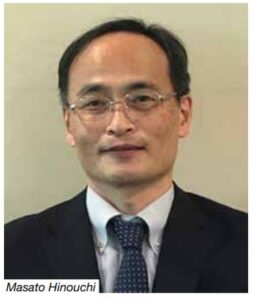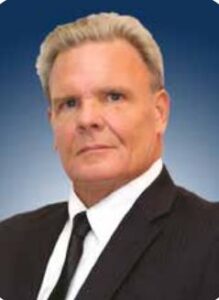Consolidation in the district cooling industry signals the possibility of utilising idle capacity, dampening demand for new chillers in the foreseeable future, amongst other challenges, says Charmaine Fernz, Features Writer, Climate Control Middle East
In a post-pandemic world, business sentiment is expected to be positive in the GCC region, with hopes of resurgence and recovery in 2022. An encouraging factor is the possible implementation of transportation networks, including metro stations, supermarkets and other commercial buildings. Paras Adhvaryu, General Manager – Applied Business, Daikin MEA, points out to growth in some verticals, including healthcare and data centres, which are showing signs of boosting the chiller market.

He says growth is especially notable in Saudi Arabia and Qatar, with the backing of national programmes, such as Saudi Vision 2030 and the 2022 FIFA World Cup. And yet, there is caution, even a certain lack of optimism. Masato Hinouchi, Deputy General Manager, Middle East Office, Mitsubishi Heavy Industries, has an opposing view to Adhvaryu. “The chiller industry is slow, as the major district cooling plant players have either slowed down or shrunk their requirement, postponing it to the next phase,” he says.
IMPACT OF CONSOLIDATION
Hinouchi sees the consolidation in the district cooling industry (see earlier interview with the CEO of Tabreed, as impacting chiller sales. “The consolidation process affects the chiller market, as the number of independent buyers will reduce,” he says. “There will also be the utilisation of the idle chiller to run at full-plant capacity. So, definitely, the requirement of new chillers will be less.” In these circumstances, it is believed the way forward for the chiller industry is transformation and adapting to change.
As Enrico Maineri, Regional Sales Manager – Gulf Area, Mitsubishi Electric Hydronics & IT Cooling Systems, explains, district cooling plants cover a relevant portion of the HVAC market in the Middle East region. He points out that centralised systems and district cooling plants have coexisted for several years without significantly impacting one another. “Moving ahead, there could be a change of route, favouring more the conventional centralised HVAC plants serving a smaller occupancy in buildings, due to persistent, smart working conditions in many parts of the world,” he says.

Adhvaryu acknowledges the impact of consolidation but asserts that it would only have a short-term impact, till idle capacity is available. He speaks of how when one such consolidation happened four years ago, Daikin was called to utilise 20,000 refrigerated tons (RT) of mothballed chillers to construct modular chiller packaged plants. Reflecting on this, he says: “We need to transform consolidations positively. Eventually, once the extra capacity is utilised, new equipment and solutions will be required.”
The message that is emerging seems to be clear: Chiller manufacturers need to take a holistic view and be ready to offer value-added solutions to the district cooling industry, instead of simply trying to sell more chillers.
THE IMPACT OF RISING COSTS
If consolidation is posing a challenge, an equally formidable one is the rise in costs. Prices of chillers are rising, with the increase in cost of raw materials being an underlying factor. As Adhvaryu explains, the considerable rise in costs of raw materials, such as copper, steel and aluminium, as well as of global logistics, has impacted profitability for chiller manufacturers and, subsequently, for end-users. “We do not see this pressure easing even by 2022, and this is likely to impact the whole construction industry, not just the HVAC industry,” he says. Sharing a similar sentiment, Maineri says, most construction materials, ferrous or not, have gone through unprecedented rising costs. “This effect, along with microchip shortage, represents another major challenge that the HVAC world is facing currently,” he says.

Like Adhvaryu, Hinouchi points out to sky-rocketing freight costs as a factor, in addition to huge scarcity of materials from sub-vendors, affecting delivery periods. “This has affected the market, in turn lowering the sales pipeline,” he says.
A NEED TO LEAN ON INNOVATION
Nevertheless, the general sentiment is that the present set of circumstances represent a silver lining – an opportunity to rethink planning and production efficiency. It is believed this can be achieved by limiting as much as possible the negative impact of higher cost of raw materials.
And through innovation. It is believed innovation needs to have a significant impact on the ROI of a company, else it is of no use. As Hinouchi explains, “DCP players are now moving towards bigger capacity chillers for better CAPEX and highly energy-efficient chillers for optimising their running cost.” With optimisation in the spotlight, energy efficiency is the key, he says.
Adhvaryu feels the industry is already on track to innovating. “Over the past three years, the chiller market has been more demanding in terms of energy efficiency,” he says. “This has accelerated innovation and led to the pioneering of new energy-efficient solutions.” Adhvaryu says the need for energy-efficient designs has increasingly resulted in chiller manufacturers ensuring that designs are sturdy to withstand the challenges of the Middle East’s climatic conditions. “Going beyond energy efficiency are global warming challenges, such as low-GWP refrigerants, like R1234ze and R32 for air-cooled chillers that are being introduced,” he points out.
An overview of the market suggests that previously, chillers were only available for capacities over 100kW, or more. Adhvaryu speaks of how Daikin has launched smaller chillers (16-90kW cooling capacity) utilising low-GWP R-32 refrigerants, inverters for all compressors and fans, along with in-built pump modules, based on compact platforms. This, he says, is suitable for villas, swimming pool cooling, and medical or industrial equipment cooling.
Agreeing on the route innovation is taking, Maineri says the remit is to ensure high-efficiency, low-noise and low-GWP solutions to satisfy national regulations, green schemes and the needs of customers. “Full-inverter solutions are nowadays the most wanted and appreciated technologies in the air conditioning field,” he says. “The combination of such technology with ‘almost natural’ or natural refrigerants will be the biggest challenge we will face in the medium-short period.”
ARE WE SUSTAINABLE ENOUGH?
With the chiller market witnessing several innovations, the question that looms large, though, is, ‘Are we being sustainable enough?’ Maineri explains that decarbonisation plans are shaping up across all countries, but at different speeds. “The common goal is to strive for a greener planet with efficient solutions having the lowest possible impact in the short term, but especially in the medium and long terms,” he says.
Sharing a similar mindset, Adhvaryu says that Daikin is focused in the right direction to decarbonisation and sustainability. “As a part of our five-year business strategy, we plan to reduce net CO2 emissions by 30% or more by 2025,” he says. “By 2030, our goal is to reduce further to 50% or more. Ultimately, we are aiming for net-zero emissions by 2050.” Other sustainable trends, he says, are what he already mentioned – transitioning to inverter solutions and the adoption of lower[1]GWP refrigerants.
This, he adds, along with promoting heat pump and energy-saving solutions, as well as refrigerant recovery and reclamation, will reduce net CO2 emissions.
MOVING AHEAD
With sustainability being the key to the future, certain trends are shaping the way the chiller industry will evolve in the coming years. As Adhvaryu says, the development of mega projects in Saudi Arabia, the rise in replacement business in the UAE, along with exponential growth of data centre and healthcare verticals will lead to an even greater focus on chiller markets.
Weighing in, Maineri points out to how, in a post-pandemic world, many circumstances changed, resulting in increased online shopping and smart working. “Empowerment of digital data exchanges translated into massive investments in the data centre technologies, with faster, powerful computer systems, which are generating a considerable amount of heating,” he says. “These must be dissipated by cooling systems. So, this is a major trend in the coming years.”
Adhvaryu says there will also be renewed interest in hot water generation from chillers using heat recovery or air-to-air/water-to-water heat pumps. Additional measures, he says, are system solutions and off-site manufacturing, resulting in the development of factory-built modular chiller plant solutions, chiller pump skids, ETS pump skids and a range of other products. He says, “We have set our sights on looking beyond flanges of chillers and providing factory-engineered and packaged system solutions, utilising off-site manufacturing technologies.”
‘THE CHILLER MARKET HAS NOT LOST ANY FOCUS’
Dan Mizesko of US Chiller Services, in conversation with Charmaine Fernz of Climate Control Middle East…
How is the chiller industry picking up in the Middle East region?
I feel the sales of chillers has slowed a bit due to COVID-19, which of course, has impacted the industry, globally. COVID-19 affected the global economy in three big ways, by directly affecting production and demand, by creating supply chain and market disruption, and by its financial impact on firms and financial markets.

Dan Mizesko
The outbreak of COVID-19 has affected many aspects of life, in general, like flight cancellations, travel bans, quarantines, restaurant closures and restriction of all indoor events. Over 40 countries declared a state of emergency, and we have seen falling business confidence, growing panic among the population and uncertainty about the future, all of which have ultimately caused slowing of the chiller market.
Having said that, I now feel that Saudi Arabia and the UAE have fared better than most, and sales are rebounding. Saudi Arabia has implemented the most stringent energy-saving standards, in order to combat the fast-growing electricity demand. The UAE has been going Green for quite some time now.
In the UAE, the cost of raw materials, customs tax and freight costs are reported to have increased significantly, resulting in a price hike of around 5-10% for all air conditioning products, and I would assume it’s the same throughout the world.
How do you see consolidation taking place in the district cooling industry as impacting the chiller market?
Considering that there is a lot of idle capacity, does consolidation open up the possibility of interconnecting reticulation networks, which means all the chillers in a currently dormant state would be called up to perform, which means there is less of a possibility of buying new capital equipment?
To be honest, I have never felt consolidation is good for the DC industry. Consolidation is generally considered to be bad for consumers and the economy. When markets are dominated by a small number of big players, there’s a danger that these players can increase prices to customers and even fix prices. Now, I understand there are district cooling councils, etc., in place; however, competition is what leads to lower prices. This kind of excessive market power can also lead to less innovation, losses in quality and higher inflation.
Regarding DC monopolies interconnecting reticulation networks, yes and no. What I have seen is when smaller plants are purchased in areas close to larger plants, the smaller plants are mothballed and the larger plants take the additional load. So, yes, dormant chillers are now utilised; however, chillers and plants that were in operation are shut down and now become dormant.
Regarding new capital purchases of equipment, the consolidation of DC companies will slow new capital equipment purchases, as plants that have been shut down can now have chillers and other equipment moved to either expand existing plants or have installed at new plants.
What are the innovations happening in the chiller market?
The innovations continue to be in oil-less, magnetic-bearing technology. Although this technology has been available in the industry with companies like Smardt chillers since 2005, the major OEMs were slower to embrace the technology and manufacture these chillers.
Now, some major OEMs are producing these chillers, including York, Daikin and LG; however, they have some ground to make up. Other innovations are CPECS and CPOP with Machine Learning (AI), which has also been available for a while but is being upgraded and improved as the technology improves.
Carrier has introduced the 19DV centrifugal chiller with a new generation of innovative technologies, including ceramic bearings system, EquiDrive compressor, which provides balanced thrusts by back-to[1]back, two-stage compressor design as well as falling film evaporator with low GWP PUREtec R-1233zd(E) refrigerant. The industry is not at all stagnant, and inovations are being introduced every year.
What are the sustainable initiatives being explored?
As stated, all these inovations are delivering lower kW per ton chillers with new refrigerants that reduce GWP. The largest opportunity I see is retrofitting existing chillers – 10 years old and above – to new control systems and oil-less, magnetic-bearing compressor technology. The savings are tremendous and at a cost of 50-60% of a new chiller, excluding installation costs. There is also an opportunity to install VFDs on existing constant-speed chillers, with new chiller control upgrades that will save 30-35% power consumption.
What are the key trends emerging that will possibly put the focus back on the chiller market?
I do not think the chiller market has lost any focus. COVID-19 has caused all industries and businesses to have to take a step back. The chiller market will and is improving and growing, and the chiller service market is going to grow, as well, as all these new advances will require a trained and professional workforce to keep all these complex chillers operating reliably and efficiently.
With the price of copper going up, how is that impacting the pricing of new chillers?
Given the COVID-recovery phase and reluctance to spend, is that a double blow for sales momentum? As stated earlier, chiller prices are up over 5-10% due to chip shortages, raw material shortages and overall supply chain issues.
With all the goals of going green and sustainablity, customers are going to have to either retrofit existing chillers or purchase new chillers, so that the sales momentum will continue to increase. The chiller industry provides essential requirements for day-to-day life, so even with the worst epidemic ever, sales and demand will continue to rise. The neccesity will always be there, at least as far as I can see.
Copyright © 2006-2025 - CPI Industry. All rights reserved.